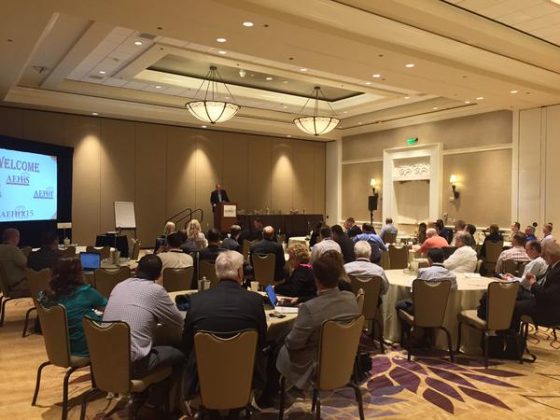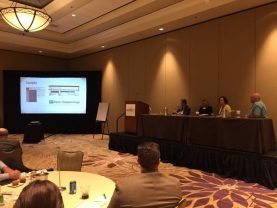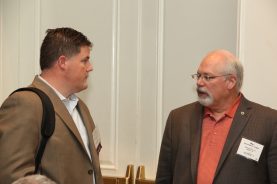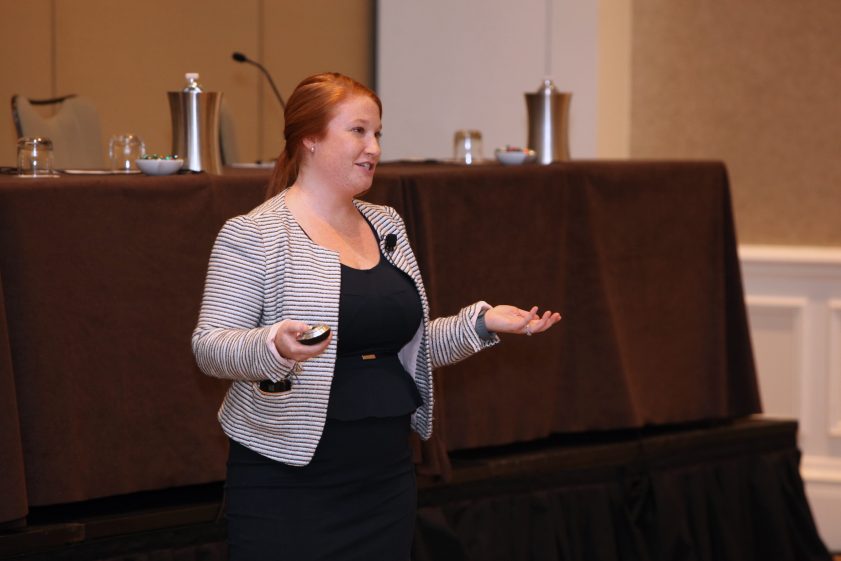INSIDE CHIME: AEHIX15 – Fostering innovation

 |
10.22.15 by Matthew Weinstock Director of Communications and Public Relations, CHIME |
The first official gathering for AEHIS, AEHIA and AEHIT members offered attendees a unique learning opportunity and provided some keen insights into critical issues facing further adoption of health IT. AEHIX15 attendees consisted of three professional membership groups: AEHIS, AEHIA, AEHIT, representing senior IT leaders in applications, security and technology.
AEHIX15, held October 7-9 in Orlando, FL, featured sessions on security, change management, making IT more user-friendly and patient engagement. Lyle Berkowitz, M.D., associate chief medical of innovation, Northwestern Memorial Hospital and medical director of IT and innovation, Northwestern Memorial Physicians Group, got everyone thinking as he discussed a key limitation in current IT systems.
“There is nothing in Meaningful Use about usability,” he said. “How come things aren’t usable? Doctors hate EMRs, but they shouldn’t.”
Innovation is essential for clinicians to get more value out of health IT systems. He cited a program at Children’s National Medical Center in Washington, D.C., that taps into the EMR to improve patient safety. Queries are run daily within the EMR to identify triggers that may signal an adverse event. Given the challenges most organizations face in underreporting of adverse events, the automated process has made it easier for clinicians to not only identify problems, but implement solutions.
Berkowitz said that innovation doesn’t have to be grandiose. Rather, he suggested, start small and don’t be afraid to fail, just be sure to learn from those experiences.
As solutions start coming though, it is important to implement a sound change management strategy. Organizations need to be ready to accept the change that’s coming, said Ellen Swoger, associate CIO, University of Mississippi Medical Center.
When the medical center began to roll out an EMR in 2010, Swoger identified several gaps. Communications between IT and operations were limited, training programs were lacking and the skill set in IT needed to be brought up to speed on new technologies. A detailed change management program was put into place, including focus groups with employees from all ancillary and clinical services. Training was retooled, physician champions were identified and more.
AEHIX15 attendees were also given guidance on how to protect their organizations from the risk of a cyberattack. While it is virtually impossible to fully prevent an attack, steps can be taken to mitigate risks when once does occur. Citing a Ponemon Institute study, Steve Olson, principal consultant, Clearwater Compliance, said that criminal attacks in healthcare have grown 125 percent since 2010 and 90 percent of organizations studied had a breach in 2014.
So what can you do? Olson and Heather Roszkowski, chief information security officer, University of Vermont Medical Center, identified some core strategies: have a strong governance process, implement a communications plan, have a response team and plan, develop metrics and keep vigilant in measuring potential risks.
For more about the AEHIS, AEHIA and AEHIT, click here.
More Inside CHIME Volume 1, No. 3:
- CHIME15: Seizing the Moment – Matthew Weinstock
- This Week’s Washington Debrief (10.20.15)




















